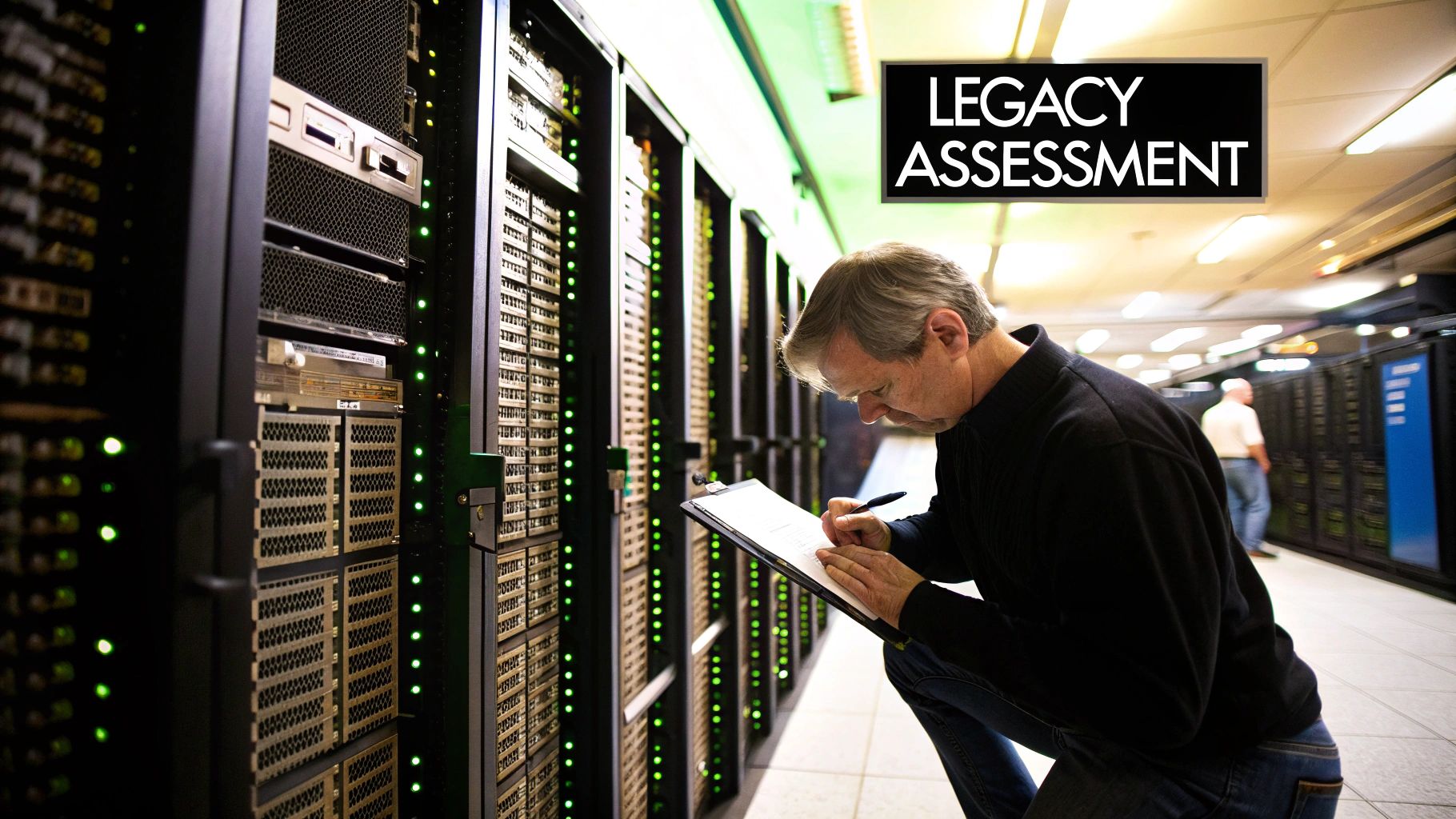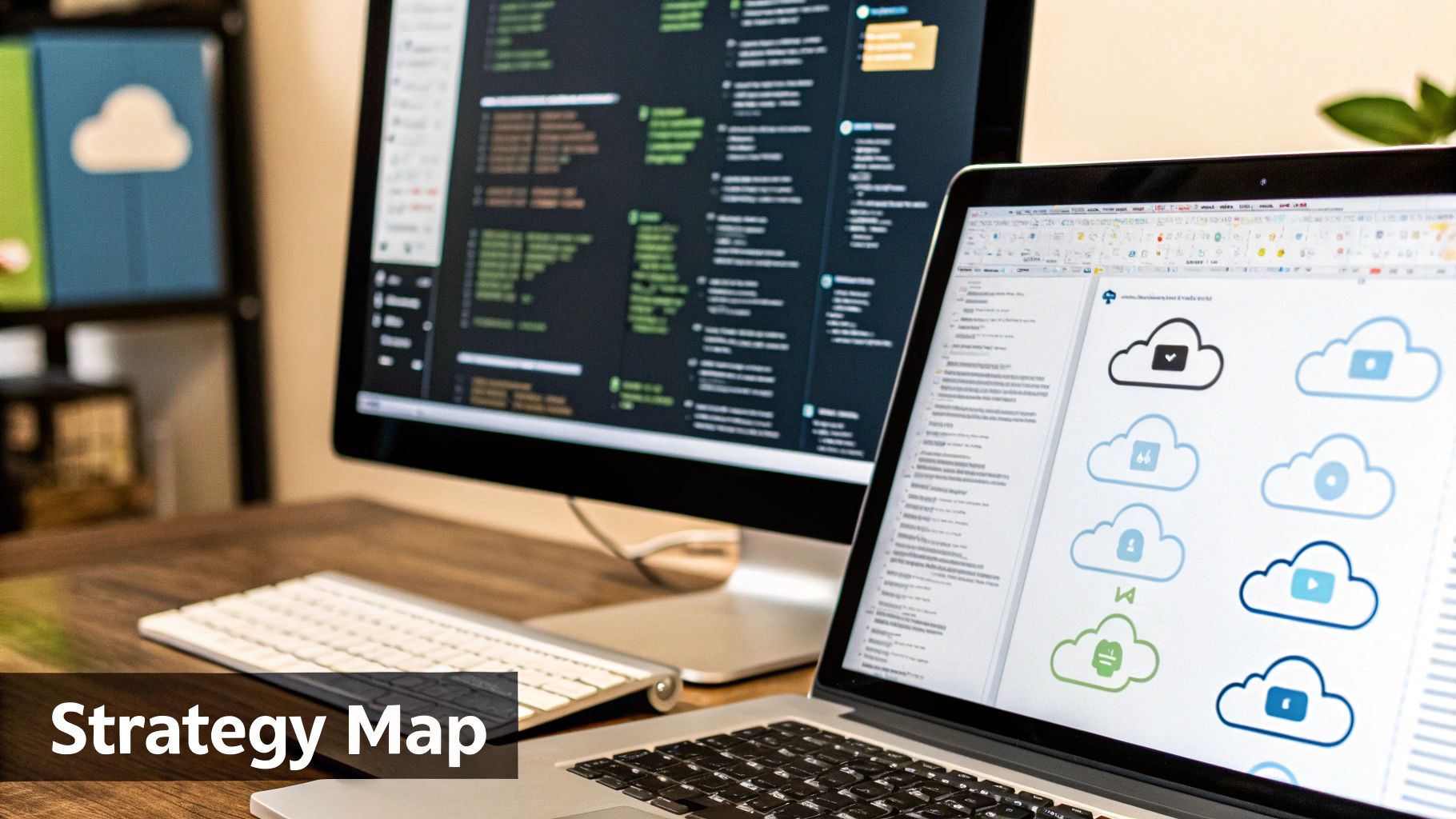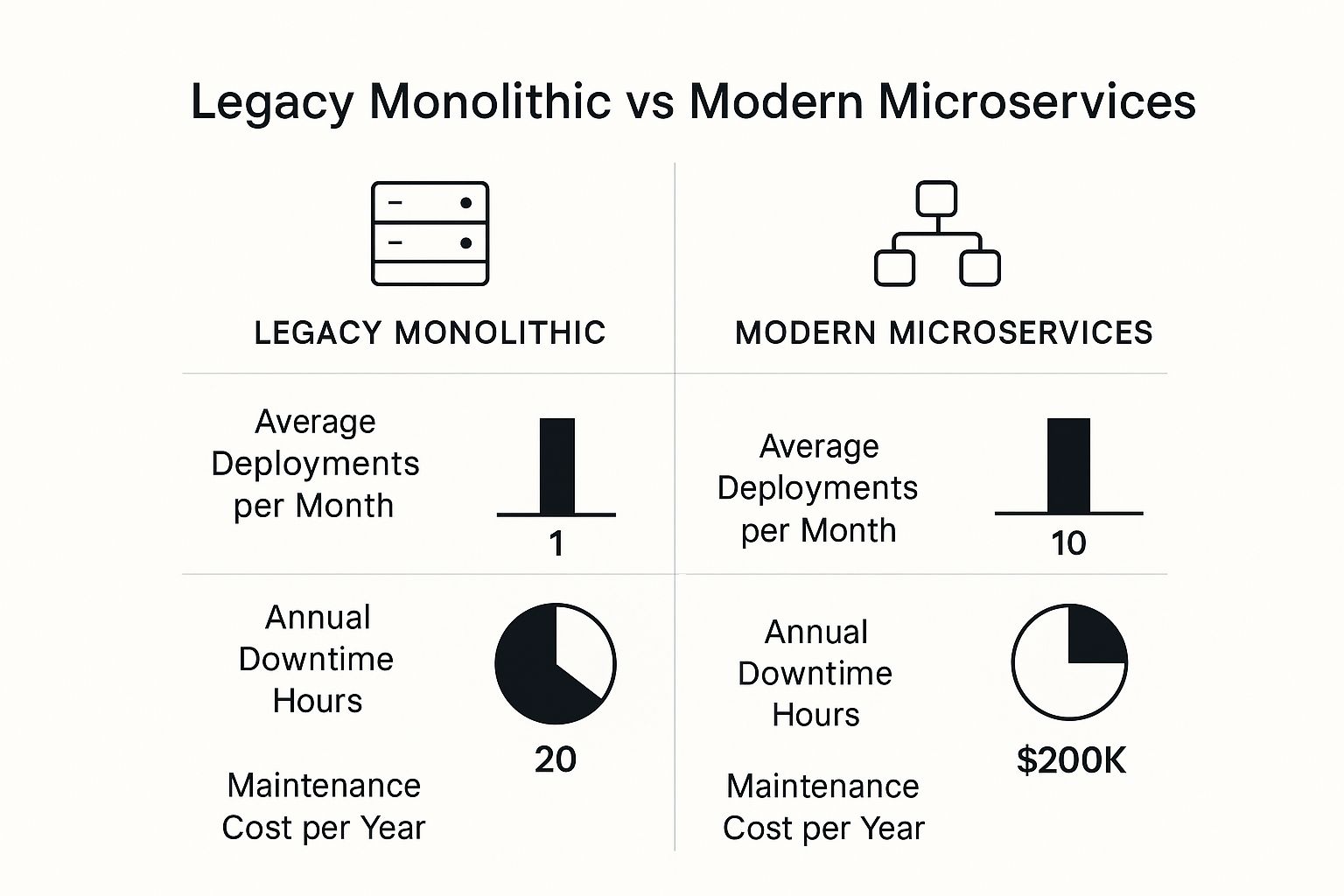The Hidden Cost of Legacy Systems in Indian Enterprises

Many Indian enterprises face a significant challenge: the rising cost of maintaining legacy systems. While these older technologies are familiar, they often hinder growth and innovation. This isn’t simply a technical issue; it’s a core business concern. Discussions with CIOs across India reveal that these aging systems quietly consume resources and impede progress.
The Financial Drain of Maintaining Outdated Systems
One of the primary hidden costs is the substantial amount of resources dedicated to just “keeping the lights on.” Maintaining legacy systems requires specialized skills, often involving a dwindling number of experts familiar with these older technologies. This results in higher personnel costs and difficulty finding replacements as experienced professionals retire.
For example, updating a decades-old system demands significantly more time and resources compared to working with a modern, flexible platform. This directly impacts an enterprise’s ability to invest in new initiatives and react effectively to market changes. Further, these outdated systems are often inefficient.
They may lack the automation and integration capabilities of modern solutions, leading to manual processes and data silos. This means employees spend valuable time on tasks that could be automated, reducing productivity and increasing operational costs. This also negatively affects customer experience, as slower processing times and limited features can lead to dissatisfaction and lost revenue.
The financial burden extends beyond direct maintenance. Legacy systems often present security vulnerabilities, increasing the risk of data breaches and cyberattacks. The costs associated with these incidents can be substantial, including regulatory fines, reputational damage, and erosion of customer trust.
Additionally, integrating legacy systems with newer technologies like cloud solutions or AI can be complex and expensive, limiting an organization’s ability to innovate and remain competitive.
The Business Imperative of Modernization
Understanding the financial implications is only the first step. For a broader understanding, learn more about Legacy Systems. Modernizing legacy systems is no longer just a technical choice; it’s a strategic imperative. The cost of inaction is significant. Indian enterprises must prioritize modernization to unlock growth potential, improve efficiency, and bolster security.
As of 2025, estimates suggest that a significant 70% of IT budgets across Indian organizations are still allocated to maintaining legacy systems. This diverts crucial funds away from new technologies and modernization efforts. Find more detailed statistics here. This heavy investment in maintaining the status quo creates a major obstacle to digital transformation. By investing in modernization, businesses can free up resources, mitigate risks, and position themselves for sustained success.
Prioritizing What Actually Matters in Modernization

Modernizing legacy systems is not a simple, uniform process. Each outdated system presents its own unique challenges and requires a tailored approach. Some systems may be posing significant risks, demanding immediate attention, while others can continue operating safely for a longer period. This is why prioritization is essential for Indian enterprises. By strategically evaluating which systems require immediate modernization, businesses can effectively allocate resources and avoid unnecessary expenses.
Conducting Effective System Audits
A structured and systematic approach is crucial for successful modernization efforts. This begins with conducting comprehensive system audits to thoroughly assess the current state of each legacy system. These audits should evaluate several key factors, including the system’s business criticality, technical health, and potential risks associated with its continued operation. For instance, a system managing sensitive customer data would likely receive higher modernization priority compared to a less critical internal tool, even if both are technically outdated.
These audits provide businesses with valuable insights into the strengths and weaknesses of their existing technology infrastructure. Furthermore, the audit process helps identify interdependencies between systems, highlighting potential bottlenecks that modernization can address. This comprehensive understanding sets the stage for developing a robust and effective modernization strategy.
Mapping Critical Dependencies and Prioritization
After completing the system audits, the next crucial step is mapping the dependencies between these systems. This process creates a visual representation of how different systems interact and rely on each other. This is particularly important in India, where many enterprises operate with complex and interconnected legacy landscapes. Understanding these dependencies is vital for preventing unforeseen disruptions during the modernization process. Upgrading one system without considering its impact on others could inadvertently disrupt critical business processes.
Therefore, prioritization must consider not only individual systems but the entire interconnected network. A prioritization matrix is a practical tool for achieving this. This matrix allows businesses to weigh various factors, balancing technical risks against business value. This structured framework enables objective decision-making and ensures that resources are allocated to the most impactful modernization initiatives.
To illustrate this approach, consider the following table:
Legacy System Assessment Framework
A structured approach to evaluate legacy systems and determine modernization priorities
| Assessment Criteria | High Priority Indicators | Medium Priority Indicators | Low Priority Indicators |
|---|---|---|---|
| Business Criticality | System failure would significantly impact core business operations | System failure would disrupt some business operations, but workarounds exist | System failure would have minimal impact on business operations |
| Technical Health | System is highly unstable, experiencing frequent outages, and difficult to maintain | System experiences occasional issues and requires moderate maintenance | System is stable and requires minimal maintenance |
| Security Risk | System has known vulnerabilities and poses a high risk of data breaches | System has some potential vulnerabilities but the risk is manageable | System is secure and poses a low risk of breaches |
| Compliance Risk | System does not comply with current regulations | System partially complies with regulations | System fully complies with regulations |
This framework provides a clear structure for assessing legacy systems and assigning modernization priorities based on their impact on the business. By focusing on key criteria, organizations can make informed decisions and allocate resources effectively.
Documenting the Architectural Landscape
Successful Indian enterprises prioritize thorough documentation. Before initiating any modernization efforts, they meticulously document their existing architectural landscape, cataloging interfaces and tracing data flows. This detailed documentation serves as a critical baseline for future planning and implementation. It’s akin to having a detailed roadmap before embarking on a journey.
For example, understanding how data flows between systems allows businesses to anticipate potential integration challenges and plan accordingly. This proactive approach significantly reduces the risks of costly errors during modernization. A comprehensive understanding of the current system also facilitates improved communication between stakeholders and ensures a smoother transition to newer technologies. By focusing on what truly matters, businesses can target their modernization efforts where they will generate the greatest impact.
Breaking the Mainframe Modernization Barrier

Mainframe modernization remains a significant challenge for many Indian enterprises. These intricate systems, often integral to core business operations, present unique obstacles requiring meticulous planning and execution. This includes addressing the inevitable loss of specialized knowledge as experienced professionals retire and navigating the inherent architectural complexities of migrating mission-critical workloads.
The Knowledge Transfer Crisis
The retirement of seasoned mainframe professionals leads to a significant loss of invaluable institutional knowledge. This exodus creates a knowledge transfer crisis, leaving organizations with systems that are often poorly documented and challenging to comprehend. These opaque systems become increasingly risky to modify and hinder innovation. The problem is further exacerbated by the scarcity of new talent proficient in these legacy technologies. The dwindling pool of mainframe experts makes finding and retaining qualified individuals increasingly difficult and costly.
Architectural Challenges in Mainframe Migration
Migrating workloads from mainframes presents substantial architectural hurdles. These systems often depend on specific hardware and software configurations not easily replicated in contemporary environments. This requires a thorough analysis of dependencies and potential compatibility problems. The sheer scale and complexity of mainframe applications can make decomposing them into smaller, more manageable components a considerable undertaking.
Despite these difficulties, mainframe modernization is not just feasible, it’s becoming essential. In fact, these legacy systems have emerged as a critical bottleneck by 2025. Learn more about the complexities and available solutions for mainframe modernization challenges and solutions. The advantages of modernizing, such as increased agility, cost reduction, and enhanced security, frequently outweigh the challenges.
Modern Approaches to Mainframe Modernization
Leading organizations are adopting modern strategies to overcome these obstacles. This involves strategically assessing various modernization approaches, including rehosting, replatforming, and refactoring. Each approach offers distinct advantages and disadvantages, and the ideal choice depends on the specific requirements of the business.
- Rehosting: This involves migrating the mainframe application to a new hardware platform with minimal code changes. It’s a relatively rapid approach, but it may not fully leverage the potential benefits of modernization.
- Replatforming: This entails migrating to a new platform while implementing some code modifications to capitalize on the new environment. This offers a balance between speed and the realization of modernization benefits.
- Refactoring: This involves restructuring and optimizing the existing code to enhance its maintainability and performance. It’s the most comprehensive approach but demands significant time and resources.
Case Studies and Specialized Tools
Several Indian financial institutions and manufacturing leaders have successfully modernized their mainframe infrastructure while ensuring uninterrupted business operations. These success stories demonstrate the importance of thorough planning, stakeholder engagement, and the utilization of specialized tools and methodologies. These tools can automate many of the complex tasks involved in mainframe migration, significantly mitigating the risk of errors and expediting the transition. For example, solutions developed by Signiance Technologies leverage cloud and DevOps best practices to help streamline modernization projects and ensure a smoother transition to modern infrastructure. This enables businesses to realize the benefits of modernization more rapidly and efficiently. By embracing these modern approaches and collaborating with expert cloud solutions providers, Indian enterprises can effectively navigate the mainframe modernization journey and unlock the full potential of their IT infrastructure.
Choosing the Right Modernization Approach for Results

This infographic illustrates the key differences between legacy monolithic architecture and modern microservices, focusing on deployments, downtime, and cost. Modernizing legacy systems offers substantial improvements in critical performance areas. Migrating from a monolithic structure to a microservices architecture can increase deployment frequency by a factor of ten, while simultaneously reducing annual downtime and maintenance costs. This highlights the potential for enhanced agility and efficiency through modernization.
Modernizing legacy systems isn’t a one-size-fits-all solution. Selecting the appropriate approach is essential for achieving desired results. The options range from straightforward lift-and-shift migrations to comprehensive application rebuilds. The ideal strategy depends on several factors, including your business context, risk tolerance, and existing technical limitations. This requires careful evaluation of your organization’s unique needs and constraints.
Matching Strategies to Specific Business Needs
Much like a doctor prescribing tailored treatments, the right modernization approach depends on the specific “patient”—your legacy system. For a system managing crucial financial transactions at a major Indian bank, business continuity is paramount. A lift-and-shift cloud migration might be the fastest, least disruptive initial option, ensuring continued service while laying the groundwork for future modernization phases.
For a retail company aiming to improve its online platform’s scalability to handle growing customer demand, a more transformative approach, such as adopting a microservices architecture, may be more suitable. This method allows for flexible scaling and faster deployments. The key takeaway is to align your chosen modernization strategy with your specific business goals.
Exploring Modernization Approaches in the Indian Context
Several modernization approaches have proven effective within the Indian business landscape. The strangler pattern, for example, enables gradual modernization by incrementally replacing components of the legacy system with new services. This minimizes disruption to current operations and facilitates a more manageable transition, particularly advantageous for large, complex systems often found in established Indian enterprises.
Service-oriented architecture (SOA) offers a structured method for exposing existing functionalities as reusable services. This approach promotes integration with newer applications and enhances interoperability. This is particularly useful for organizations connecting legacy systems with modern technologies. Finally, adopting microservices allows for the development of highly scalable and resilient applications. Many Indian tech companies, including Signiance Technologies, use these approaches to guide clients toward successful modernization initiatives.
To help visualize the different approaches, let’s examine a comparison table:
Introducing the “Modernization Approaches Comparison” table, which analyzes various modernization strategies, outlining their benefits, risks, timeframes, and cost implications.
| Modernization Approach | Best Use Cases | Implementation Timeline | Resource Requirements | Risk Level | Cost Implications |
|---|---|---|---|---|---|
| Lift-and-Shift | Applications needing quick cloud migration without significant code changes | Short-term (weeks to months) | Moderate | Low to Medium | Moderate |
| Strangler Pattern | Large, complex systems requiring gradual modernization | Long-term (months to years) | High | Medium | High |
| Microservices | Applications needing high scalability and flexibility | Medium to Long-term (months to years) | High | Medium to High | High |
| SOA | Integrating legacy systems with newer applications | Medium-term (months) | Moderate to High | Medium | Moderate to High |
This table provides a high-level overview of each approach. The specific timelines, resource needs, and costs will vary depending on individual project complexities. Choosing the right approach requires a thorough assessment of your specific business needs and technical landscape.
Practical Frameworks for Success
Throughout the modernization process, maintaining business continuity, data integrity, and cost management is crucial. Establishing robust data backup and recovery mechanisms protects against data loss during the transition. This is especially critical for regulated sectors like finance and healthcare. Implementing effective monitoring and testing procedures ensures the modernized systems perform reliably.
Clearly defined performance metrics and benchmarks enable organizations to track progress and measure the success of their modernization efforts. These metrics might include improvements in system performance, reductions in downtime, and lower maintenance costs. By implementing practical frameworks and collaborating with experienced modernization specialists, Indian businesses can confidently manage the intricacies of legacy system transformation and achieve genuine business value.
The Human Side of Modernizing Legacy Systems
Modernizing legacy systems is a complex process that goes beyond simply upgrading technology. It requires a significant shift in organizational culture and mindset. While technical expertise is essential, the human factor often plays a decisive role in the success or failure of these projects. Resistance to change, apprehension about new technologies, and job security concerns can significantly hinder progress. This section explores the organizational and cultural hurdles faced by Indian businesses undergoing modernization, drawing insights from successful change leaders. Before making any decisions, it’s wise to explore different modernizing legacy systems approaches and strategies.
Securing Executive Buy-In and Building Teams
A crucial initial step in any successful modernization project is securing executive buy-in. This goes beyond mere approval; it requires fostering genuine enthusiasm and commitment from leadership. Clearly communicating the business advantages of modernization, such as increased efficiency, cost reduction, and enhanced customer satisfaction, is vital for gaining support.
Once leadership is on board, building cross-functional teams becomes paramount. These teams should comprise representatives from various departments, ensuring diverse perspectives and promoting collaboration. Early stakeholder involvement cultivates a sense of ownership and minimizes potential resistance down the line.
Addressing Stakeholder Anxieties
Transformation can be unsettling, especially for employees accustomed to existing systems. Directly addressing these anxieties is essential. Technical teams might worry about their skills becoming obsolete in a modernized environment. Targeted training programs can alleviate these concerns by offering opportunities to upskill and adapt to new technologies.
C-suite executives, on the other hand, may be preoccupied with potential business disruption during the transition. Transparent communication and well-defined contingency plans can effectively mitigate these worries.
Practical Communication and Feedback Mechanisms
Effective communication is the bedrock of successful change management. This encompasses not just disseminating information but also actively seeking feedback. Regular progress updates, open forums for addressing questions, and clear channels for reporting concerns foster trust and reduce anxiety.
For instance, creating a dedicated communication platform, like an internal website or a mobile app, enables employees to access up-to-date information and express their opinions. This transparent approach keeps everyone informed and engaged in the process.
Measuring Adoption and Demonstrating Value
Measuring the success of modernization extends beyond technical benchmarks. Tracking adoption rates across different departments, gathering user experience feedback, and demonstrating the positive influence on business outcomes are critical for validating the investment.
These metrics offer concrete evidence of the value generated by the modernization initiative, reinforcing its importance and encouraging continued support. Quantifiable enhancements in system performance, decreased downtime, or improved customer satisfaction provide tangible proof of the project’s success. This data-driven strategy strengthens the rationale for further modernization efforts and instills confidence in the organization’s ability to adapt and prosper in a dynamic business environment.
India’s Evolving Modernization Landscape
The application modernization market in India is experiencing rapid growth, driven by the need for businesses to stay competitive. This transformation is impacting companies across diverse sectors. By examining current market trends and insights from industry leaders, we can gain a better understanding of this evolving ecosystem and its impact on your company’s modernization efforts.
Emerging Service Offerings and Key Players
The Indian modernization landscape offers an increasing array of specialized services and solutions. This gives Indian businesses numerous options to find the right fit for their needs. For instance, some providers specialize in mainframe modernization, while others concentrate on cloud migration. This specialization allows businesses to tap into the expertise of providers deeply familiar with the specific challenges and optimal approaches within their chosen area.
Key players in this market include prominent Indian IT service providers like Infosys, Cognizant, Wipro, and HCL Technologies. These companies are leading innovation and pushing the boundaries of modernization practices in India and globally. Their influence goes beyond service delivery; they shape industry best practices and contribute to the overall growth of the modernization landscape.
Partner Selection and Implementation Approaches
Selecting the right modernization partner is critical. Choosing a partner involves careful consideration of several factors, including experience, technical skills, and industry knowledge. Cultural fit and a commitment to quality service are also important considerations. Successful partnerships rely on open communication, collaboration, and a shared vision of project objectives.
Different modernization approaches offer varied implementation strategies. Some favor a phased approach, modernizing systems incrementally to reduce disruptions. Others might choose a more comprehensive approach, tackling multiple systems simultaneously. The implementation method should align with a business’s risk tolerance, budget, and timeline.
Economic Frameworks and ROI
Evaluating modernization initiatives requires sound economic frameworks. Leading Indian organizations use ROI models to assess projects, considering both short-term and long-term benefits. They analyze cost structures, factoring in expenses related to software licenses, infrastructure improvements, and ongoing maintenance.
This meticulous financial planning ensures modernization initiatives align with broader financial strategies. Funding approaches also play a key role, with different organizations exploring various financing options depending on their individual circumstances. The Indian application modernization services market is projected to expand significantly between 2025 and 2031. For more detailed data, see the research here. This growth highlights the growing understanding that modernizing legacy systems is vital for future competitiveness. Despite inherent risks and substantial upfront investment, Indian businesses are actively pursuing modernization to fuel growth and bolster their digital capabilities.
Measuring Modernization Success Beyond the Metrics
Modernizing legacy systems is a major project, and measuring its success requires a comprehensive approach that extends beyond simple technical benchmarks. While improvements to system performance and reductions in downtime are valuable, true success lies in achieving concrete business results and encouraging beneficial changes within the organization. This requires a balanced measurement framework that assesses both technical enhancements and their influence on business operations.
Building a Balanced Measurement Framework
A strong framework should encompass a blend of quantitative and qualitative metrics. System performance indicators, like transaction processing speed and error rates, provide hard data regarding technical enhancements. However, these figures don’t tell the whole story.
We also need to examine business outcome metrics, such as sales growth, improvements in customer satisfaction, and reduced time-to-market for new products. For example, if modernization allows a bank to accelerate its loan approval process, the subsequent increase in loan volume serves as a key performance indicator of success.
Furthermore, the framework should consider less quantifiable yet equally significant aspects, like improved employee morale and a boost in innovation capacity. These qualitative elements can be evaluated through surveys, interviews, and direct observation. For instance, if modernization allows employees to automate repetitive tasks and concentrate on more strategic work, their increased job satisfaction becomes a crucial measure of the project’s overall effect.
Establishing Meaningful Baselines and Targets
Before beginning modernization efforts, it’s crucial to set clear baselines for key metrics. This creates a standard against which progress can be gauged. For example, monitoring the current average time required to process a customer order forms a baseline against which improvement post-modernization can be assessed.
Establishing realistic goals based on these baselines ensures that objectives are attainable and in line with business strategies. For example, targeting a 20% reduction in customer order processing time within six months sets a tangible and measurable objective.
Implementing Continuous Measurement
Modernization is a continuing process, not a one-time fix. This demands ongoing measurement and tracking of progress. Regular reporting and analysis of essential metrics allow for prompt modifications to the modernization strategy.
For example, monitoring the number of defects identified after each software release helps to pinpoint potential issues and informs future development work. This iterative approach ensures that the modernization initiative stays on course and provides lasting value.
Communicating Success to Stakeholders
Effectively communicating the benefits of modernization to various stakeholders is vital. Technical teams value information on improvements to system performance, while business leaders are more focused on the effects on revenue and customer satisfaction.
Adapting the communication to the specific audience ensures that everyone understands the value of the investment. For example, a presentation to the executive team might highlight how modernization has contributed to an increased market share by facilitating faster product launches. Sharing success stories with employees through internal communications or company meetings can foster a sense of pride and ownership in the transformation.
Modernize your legacy systems for success with Signiance Technologies. We provide expert guidance and implement best practices, from cloud architecture design to automated DevOps pipelines, to help your business achieve tangible results.
